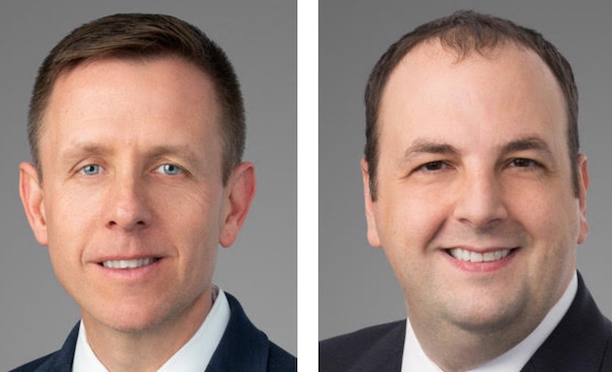 K2 Intelligence managing directors (from left: Michael Carroll, Paul Ryan)
K2 Intelligence managing directors (from left: Michael Carroll, Paul Ryan)
NEW YORK CITY—In 2013, fraud and corruption is estimated to have cost taxpayers and developers $860 billion, according to Global Constructive Perspectives and Oxford Economics. But there are companies that monitor the workplace to stave off these losses.
K2 Intelligence is an investigative, compliance and cyber defense services firm. Private companies hire them or comparable firms as a proactive measure to reduce fraud and waste. State and city projects receiving federal funding often require monitoring so bring in such folks to meet regulatory specifications. When a court finds fraud or criminal behavior, it can appoint monitors, for example, to watch over landlords or construction sites.
Managing directors at K2, Michael Carroll and Paul Ryan, tell GlobeSt.com how their teams include accountants, lawyers, fraud examiners, engineers, and staff experienced in the full range of issues they review. Just a small handful of the issues at stake are budgets, construction safety, environmental compliance and wages.
Their experts provide an initial assessment, evaluating controls that an organization has in place. K2 will then write a report with recommendations for processes or ways to tighten existing ones. They will then take their plan into the field, showing up at the site to monitor the project.
Although declining to list private clients, K2's public work has involved the New York School Construction Authority, rehabilitation at the World Trade Center, and the City of New York's rapid repair program following Hurricane Sandy.
K2 monitoring happens in real time. Carroll notes with disasters federal money comes in quickly. Contractors are asked to do a lot of work in a short amount of time, where it's hard for even legitimate companies to keep up the pace.
“We have caught contractors, with electrical wiring where they are paid by the foot or by the yard, laying it in the house and their measurements are just way off,” Carroll says. “At the end of the day, people thought it was contractors trying to do the right thing but moving too quickly and who got a little sloppy on the accounting.”
However, unlike with a traditional auditor, who reviews books six month to a year after the fact, the K2 audits are reported by field people as the work is done. So, money was drawn back before invoices were issued or paid.
Their monitors are part of the project with engineers and investigators throughout the site daily. They attend project meetings and evaluate change orders prior to approvals. These types of steps provide services distinguishable from traditional auditing.
But is their presence ever a “Big Brother” disruption that could harm morale?
Ryan states now the proactive nature of monitorship is prevalent in the tri-state area. “People recognize it's a good measure and are not necessarily defensive as they may have been 20 years ago,” he says. “A lot of people once they understand it and once it is up and running, they welcome it.”
He adds it is similar to internal audits. Also, it's not necessarily a management versus labor initiative. They have been called in to ensure workers are being fairly paid and protected at job sites.
It's also not always about fraud. “Even something as simple as evaluating a contract and the requirements of how things are supposed to be built, on many private projects, we've found it's not fraud but sometimes contractors are just not following the negotiated terms of the contract,” says Ryan. “That leads to savings for our clients.”
What upcoming projects could use integrity monitoring? They suggested whenever there is governmental funding—such as with the Amazon HQ2, the stakes are higher. With incentives, that's taxpayers' money.
© Touchpoint Markets, All Rights Reserved. Request academic re-use from www.copyright.com. All other uses, submit a request to [email protected]. For more inforrmation visit Asset & Logo Licensing.







